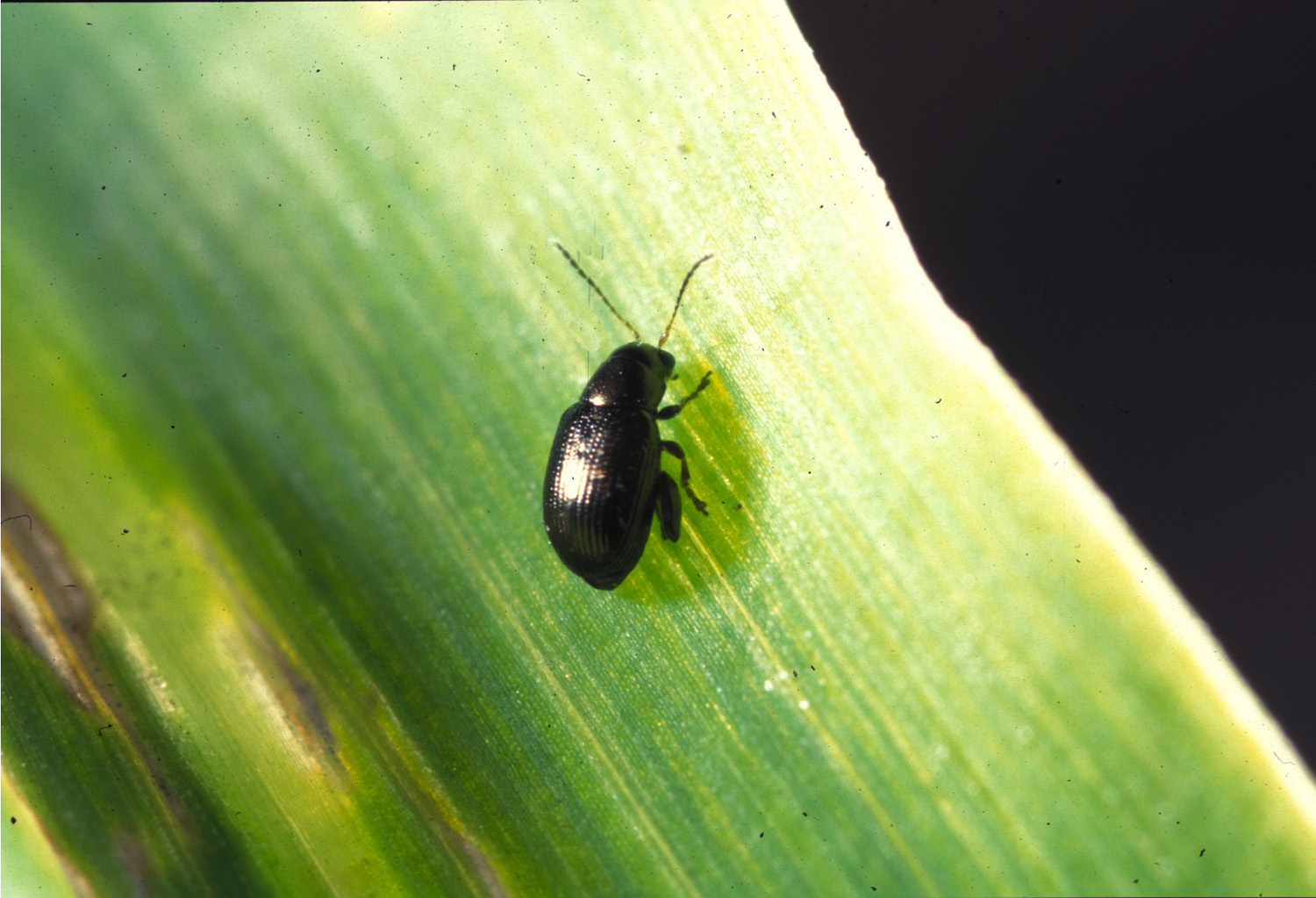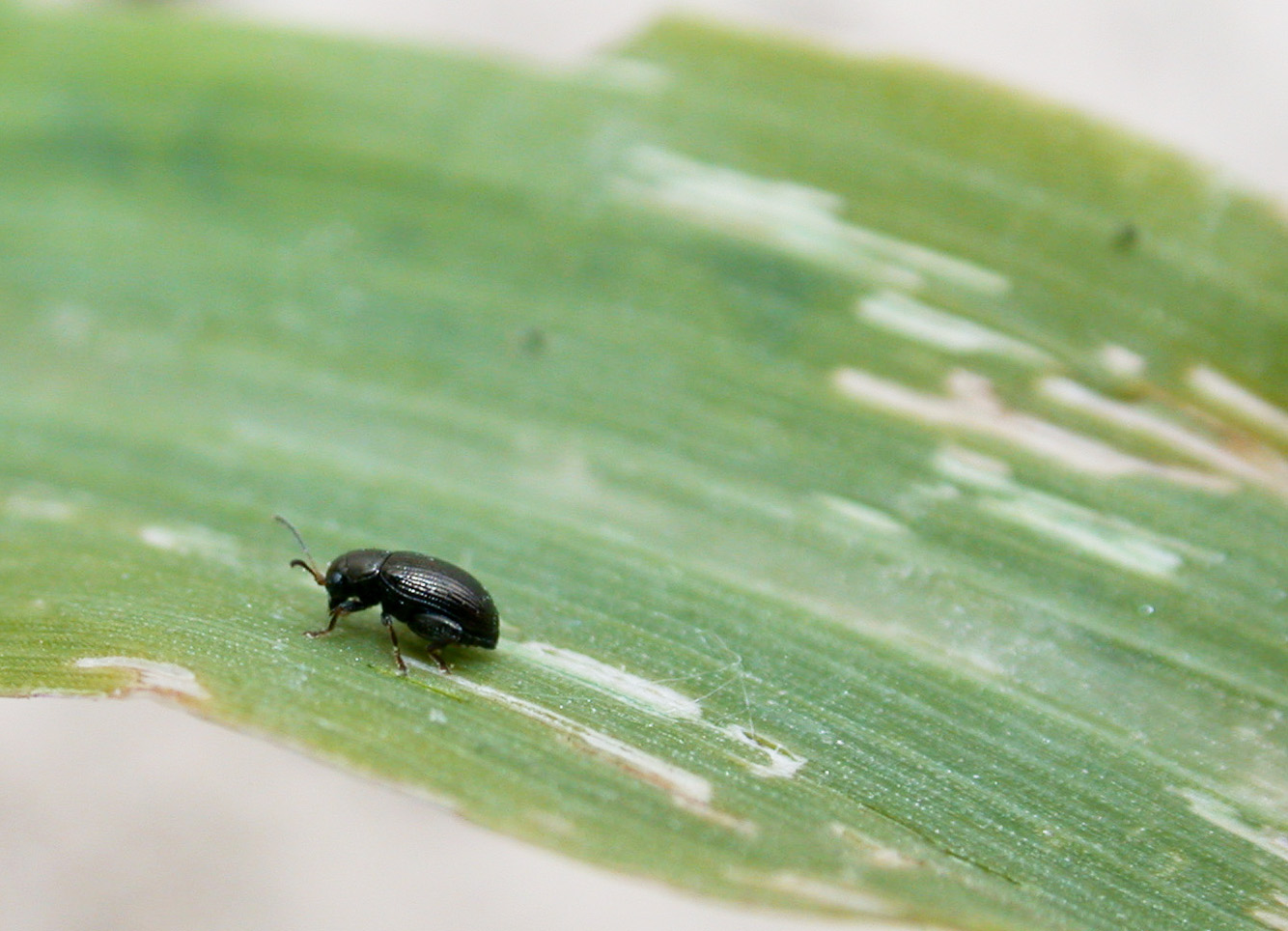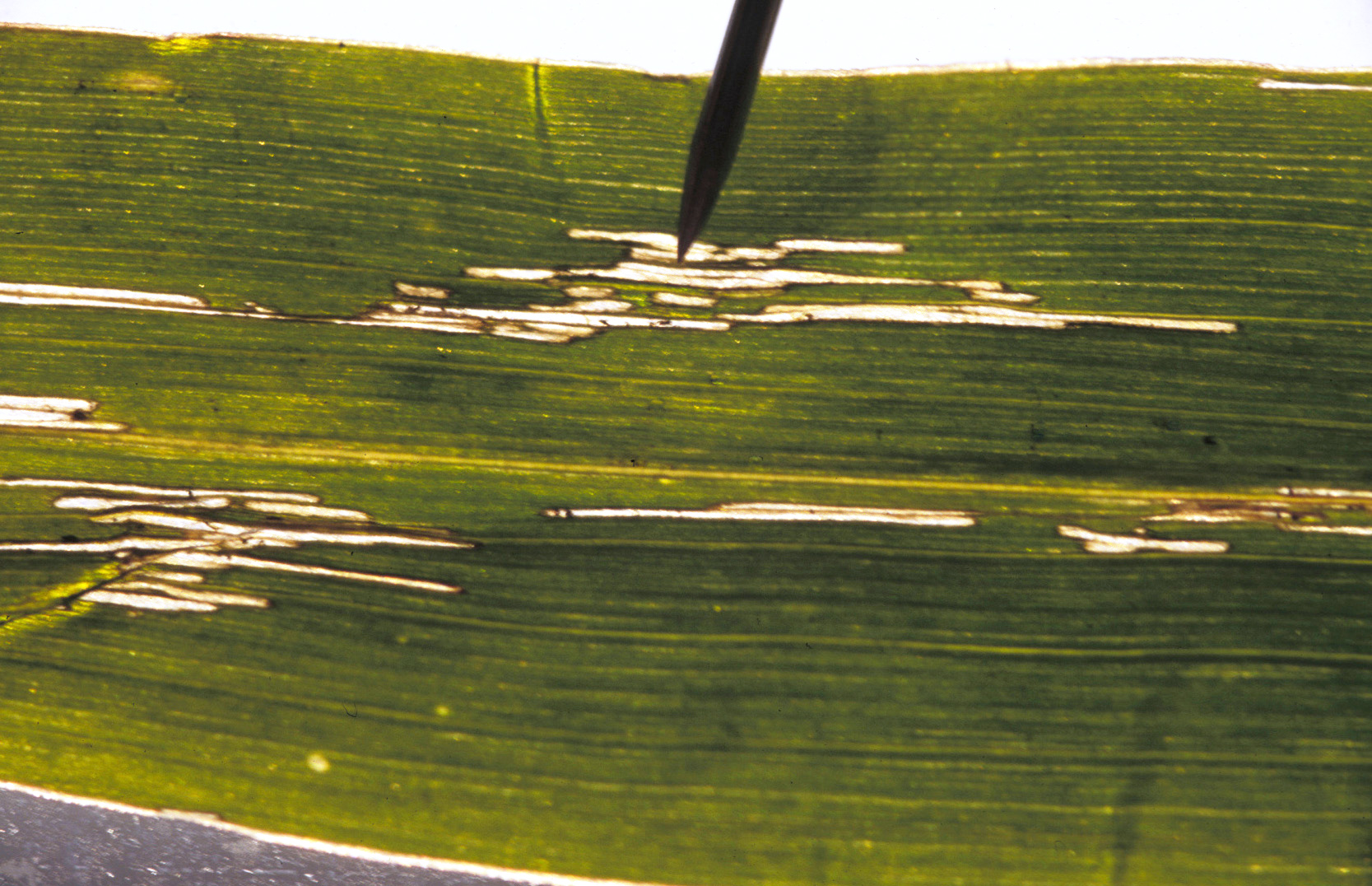Corn Flea Beetles (Corn)
Chaetocnema pulicaria Melsheimer
Search the Pest & Crop Newsletter

The ability to see these full-sized life-cycle images is currently disabled to resolve an issue.
Corn Flea Beetle E-series 74-W
Appearance and Life History
The corn flea beetle, though minute, can cause considerable damage to corn. Damage is most likely to occur when corn plants are growing slowly due to poor growing conditions, and overwintering flea beetle populations are high because of a mild winter.
The corn flea beetle is a tiny pinhead-sized [1/16 inch (1.6 mm) in length] black insect with thickened hind legs that enable it to leap considerable distances when disturbed.
Flea beetle eggs are deposited on weeds, corn, other cultivated crops, or in the soil near the host plant. Larvae hatch, feed on the roots of plants, pupate in the soil and emerge as adults in late July. The corn flea beetle overwinters in the adult stage.
Damage
The corn flea beetle feeds on corn leaves by stripping away the top layer of plant tissue. Feeding damage appears as gray to brown lines or “tracks” etched on the leaf surface. Heavily infested plants may appear gray as their leaves shrivel and die.
Economic injury is generally sustained only by seedlings less than 6 inches (15 cm) in height that have high numbers of beetles, or on those plants suffering from environmental stress. The corn flea beetle is a vector of the bacterium Erwinia stewartii, resulting in plant damage referred to as Stewart’s disease. This disease can severely reduce yields, especially in susceptible sweet corn and seed corn inbreds.
Sampling Method
- Immediately sample field if high numbers of corn flea beetle or feeding damage is found during early season field surveys.
- 5 areas of the field, 20 consecutive plants
- Examine the upper portion of the corn leaves as well as the undersides of the lower two leaves.
- Record the number of plants within each sample set that are damaged. Determine the percentage of damaged plants in the field. Note the severity of the damage (percent of leaf area damaged, leaves shriveled, plants killed, etc.) in the field, as well as average number of beetles/plant.
- Sampling for corn flea beetle is typically unnecessary once the plants reach V5 stage.
Management Guidelines
Corn Insect Control Recommendations:
- Prior to Corn Growth Stage V4 on dent corn, control may be necessary if 50% of the plants inspected show severe corn flea beetle feeding damage (plants begin to look silvery or whitish, or leaves begin to die), approximately 5 or more corn flea beetle per plant are found, and poor growing conditions are causing slow corn growth.
- Corn flea beetle may also transmit the bacterium that causes Stewart’s wilt as it feeds. In sweet corn the disease may result in ears that are smaller than normal, or some infected plants may die. In seed production fields, severe leaf blight may cause lightweight, chaffy ears and increase the likelihood of stalk rots. If the sum of the mean daily temperatures for the months of December, January, and February total above 90, flea beetle survival will be moderate to high thus increasing the chance of disease problems. The beetles alone are seldom severe enough to kill plants. They may kill plants if there is a combination with the disease. In seed production fields where highly susceptible inbreds are utilized, treatment is probably justified if corn flea beetles are numerous.


Photo by J. Obermeyer
The overwintering corn flea beetle’s survival is impacted by winter temperatures. Colder temperatures result in lower beetle survival while mild temperatures enhance survival. To determine the impact of weather on beetle survival and the incidence of Stewart’s disease, obtain average daily temperatures (high + low/2) for the months of December, January, and February. If the sum of the mean daily temperatures (°F) for these months total below 90, flea beetle survival will likely be low thus decreasing the chance of disease problems. If between 90 and 100, moderate disease activity is a possibility. Sums above 100 indicate that there is a high probability that disease problems will develop for some types of corn.




